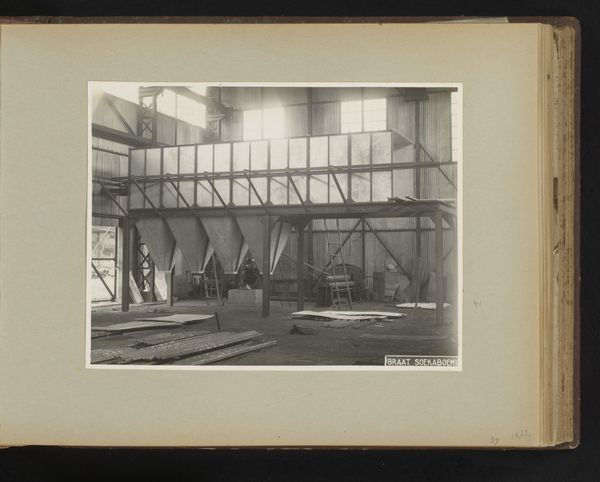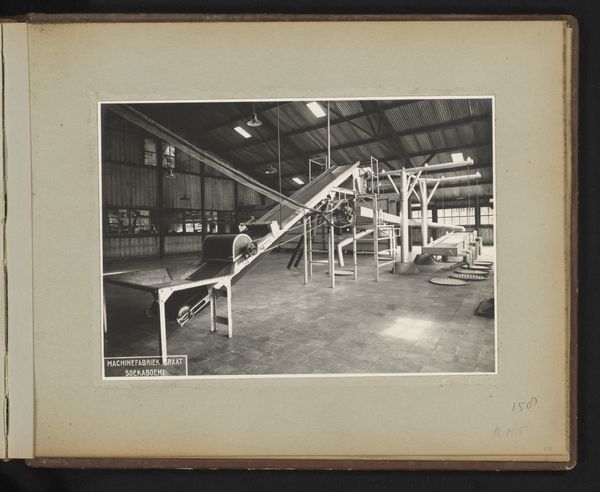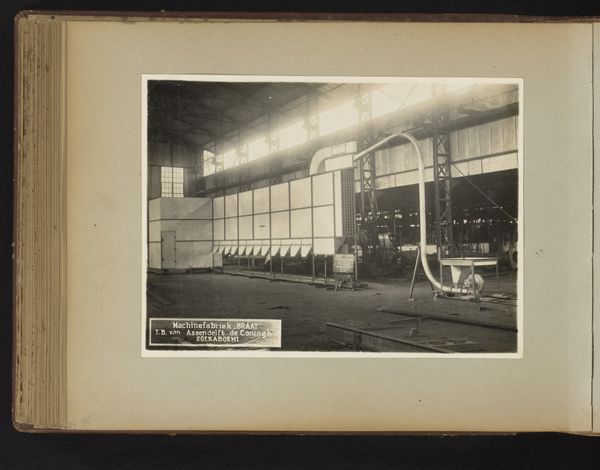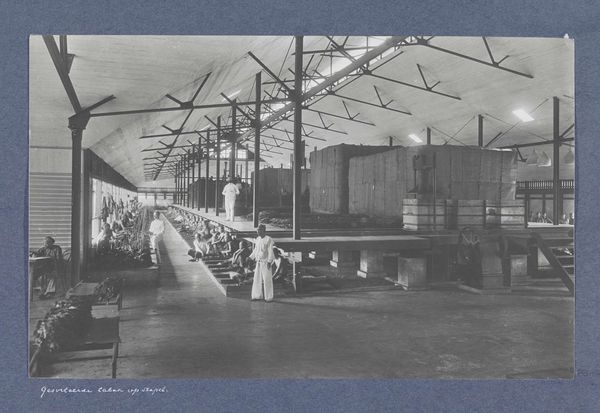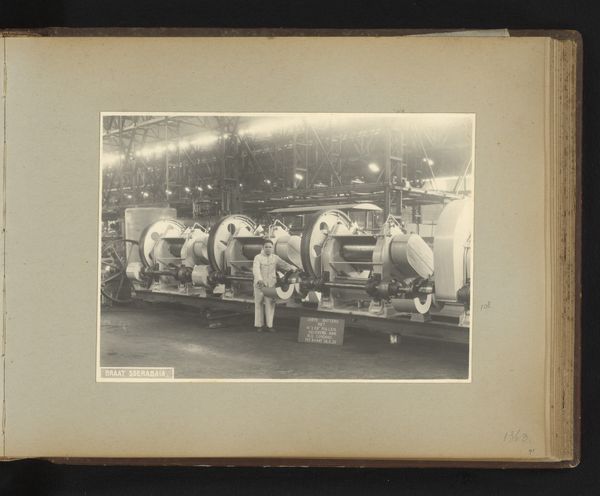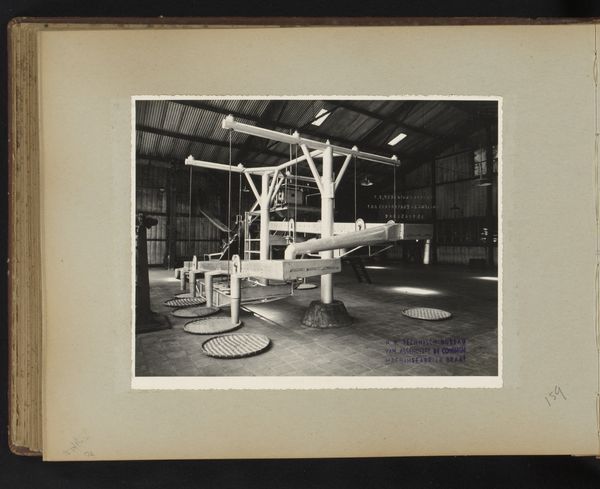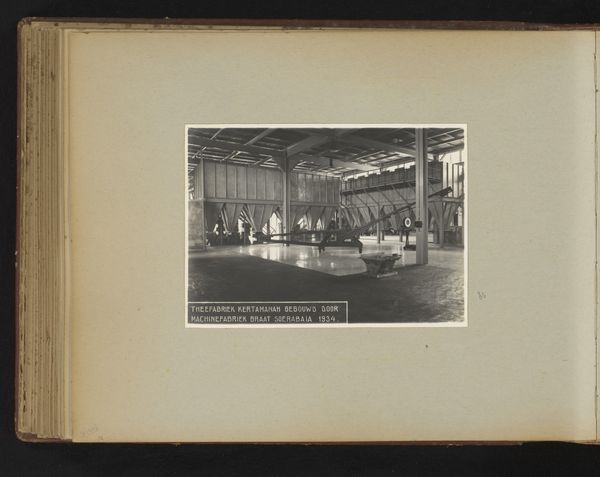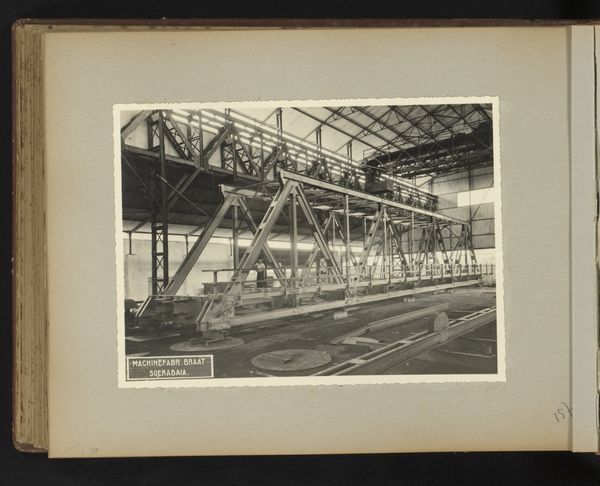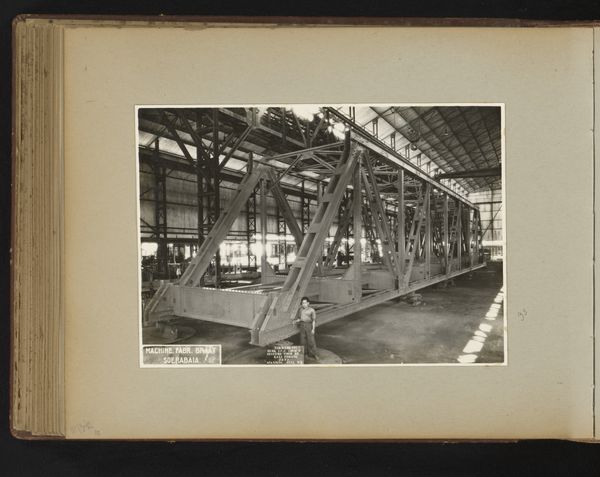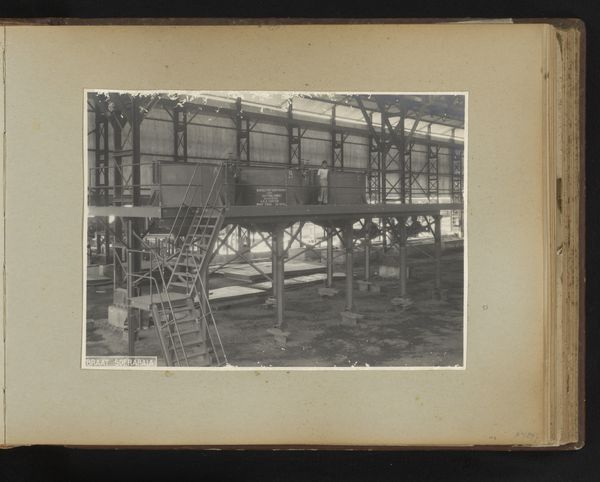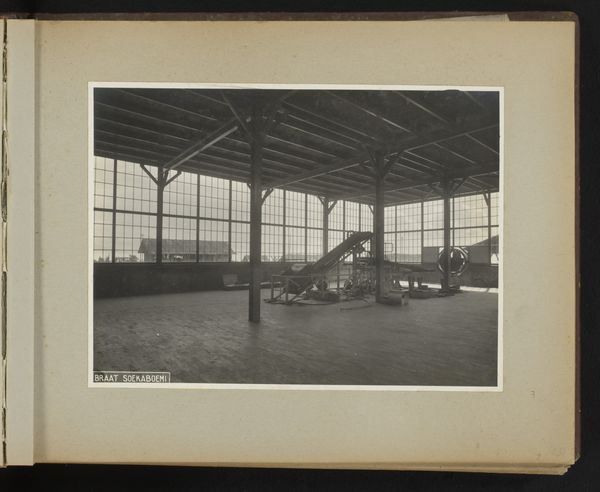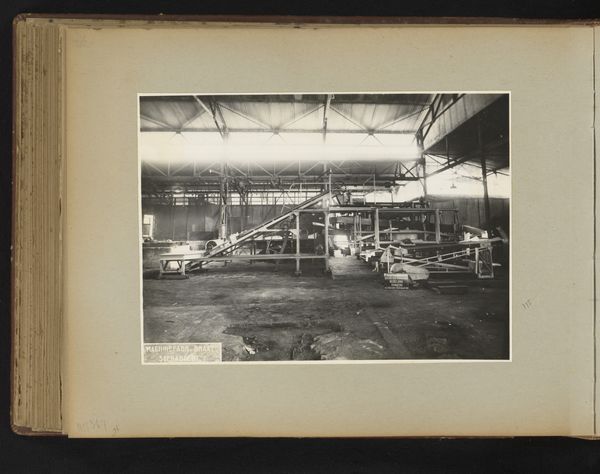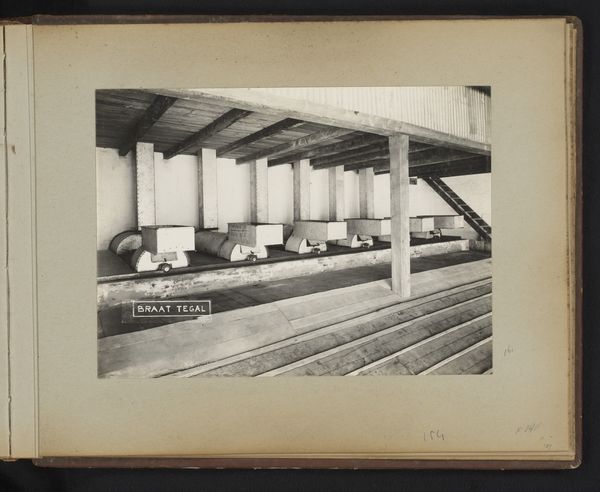
photography
#
landscape
#
photography
#
realism
Dimensions: height 172 mm, width 230 mm, height 250 mm, width 320 mm
Copyright: Rijks Museum: Open Domain
Curator: What grabs me immediately about this photograph is the silence. It's almost palpable. Editor: It's definitely stark. We're looking at "Fabriekshal met installaties"—"Factory hall with installations"—a black and white photograph taken sometime between 1931 and 1937. The photographer remains anonymous. And you’re right, the quiet is there. This image whispers volumes about industry and labor during a time of massive upheaval. Curator: I see towering, almost geometric shapes—these imposing tanks or silos—dominating the space. They’re beautifully lit, but it’s a severe kind of beauty, isn’t it? There’s very little that feels soft or welcoming in this scene. It is imposing... and even though nobody's in this image, I feel that pressure of industrial space pressing on my imagination. Editor: Absolutely. Consider the socio-political context. This was a period of both industrial boom and widespread economic depression. Images like these, particularly if they romanticize industrial space as this one somewhat does, can obscure the human cost of progress, erasing the bodies and experiences of the workers within those walls. It could be seen to be glorifying something which exploits people. Curator: So you are seeing not absence of humanity, but its effacement, you could say... I guess to me, that erasure is what evokes feeling and creates meaning. I see almost gothic lines, skeletal structures of steel and glass reaching upwards. Editor: Precisely. It reminds us that photographs, even when they appear to be objective documents, are always filtered through the lens of ideology, be that gender, power, class or whatever angle that’s used. And given the period this photograph emerged, it might well idealize industrial efficiency. Curator: Ah, the plot thickens... but thinking of my first instinct, that's why I initially saw a strange melancholy: those lines reaching heavenward but leading nowhere, they might not be celebratory at all, but represent what was aspired to, not reality? It may be me and my creative projections but I guess for an industrial image, my view isn't quite down to Earth... Editor: Perhaps your reaction reminds us to avoid any totalizing narratives when approaching these sorts of artworks. Let's embrace the contradictions. A picture may well show many things, depending on the lens one takes, and from which perspective and at what time of seeing this. Curator: Yes... in the end the photograph allows us that possibility to come back and look over and over to be rewarded by how much is there which we had previously missed, hadn't we? Editor: Well put; these visual records prompt endless questions, allowing for endless ways of interpreting our world, yesterday and today.
Comments
No comments
Be the first to comment and join the conversation on the ultimate creative platform.
